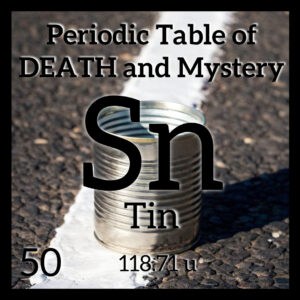As kids, did you ever play a game called Kick the Can? It’s a variation on hide-and-seek plus tag and doesn’t need a specific kind of playing field or any specialized equipment. The only things necessary were a bunch of kids whose moms told them they couldn’t come back inside the house until dark, and an empty, unlabeled can somebody pulled out of the trash.
When everybody was gathered and ready, that shiny tin can was placed in an open area—usually in the middle of a quiet neighborhood street—and one of the kids kicked the can as hard as they could, the sounds of hollow metal clunking down the blacktop started the game. Whoever volunteered to be “it” ran and grabbed the can and replaced it on the original spot while the other kids hid behind parked cars, behind bushes and trees, and around fence corners. “It” then tried to find and tag the hidden kids, but at the same time had to protect the can from being kicked and releasing anyone tagged from “jail”. We’d play for hours and now lament that we’re losing these unstructured outdoor games that used to be passed down from older to younger kids, to digital entertainment and organized sports ruled by adults.
Makes me feel like telling some young whippersnapper to get off my lawn.
Let’s talk about that can
The origin of the Kick the Can game is unknown, although it became popular in the 1930s during the Great Depression because cheap, convenient, nutritious, and filling were the buzzwords for feeding hungry people who’d lost their jobs and had little or no money to buy something to eat. Canned food filled that need—usually at the expense of taste and texture—and ended up changing American and world diets for generations. Canned food is still the most requested item for food pantry donations because it doesn’t need refrigeration and has an almost infinite shelf life. Seriously. The “expiration” date stamped on the can is not about food safety. It’s actually a “best by” date that is about food quality.
Case in point: In 1865, the Steamboat Bertrand was on its way to the goldfields in Montana territory filled with provisions when it hit a snag outside Omaha, Nebraska, and sank in less than ten minutes. One hundred years later, half the cargo was salvaged, including canned goods.
“Among the canned food items retrieved from the Bertrand in 1968 were brandied peaches, oysters, plum tomatoes, honey, and mixed vegetables. In 1974, chemists at the National Food Processors Association (NFPA) analyzed the products for bacterial contamination and nutrient content value. Although the food had lost its fresh smell and appearance, the NFPA chemists detected no microbial growth and determined that the foods were as safe to eat as they had been when canned more than 100 years earlier.”
Doesn’t it make you wonder if any of the NFPA chemists took a bite of the “still safe to eat” food they tested? 🤢
An army runs on its stomach
You might have noticed something else as we explore canned food. The historical dates keep going backwards—present day, the 1930s depression era, and 1865, which just happens to be the end date of the American Civil War (1861-1865). And war and feeding the troops are where logistics come in.
Sure enough, the beginning of large-scale canning for food preservation came about because trying to scale up the ancient forms of food preservation like drying, smoking, fermenting, pickling and salting, or storage of food in glass bottles and jars, clay pots, and wax-sealed amphora to feed a highly mobile army made up of thousands of men wasn’t feasible. So, canning was invented because of a contest sponsored by, believe it or not, Napoleon Bonaparte. Well, actually, it was the French army that offered the 12,000 francs prize, which was eventually won by a candy maker, Nicolas Appert, in 1806. And on him was bestowed the title “The Father of Canning.” Comme c’est merveilleux!
While Appert’s method created safe and portable food in sealed glass vessels, a British merchant, Peter Durand, improved the manufacturing process and received a patent for food preservation in tin-plated iron cans. Why tin-plating? Tin was erosion-proof proof whereas iron was not. And if you’ve ever left food in a cast iron skillet overnight in the fridge because you were too lazy to move it to plastic or glass containers, iron also makes everything taste like iron (Fe).
Tin (Sn from the Latin stannum) is a soft and malleable, silvery-white metal with an atomic number of 50 and an atomic weight of 118.71. It resides in period 5 of the periodic table and is perched directly above lead (Pb), another soft, malleable metal. It is the 49th most abundant element in the Earth’s crust at 0.00022%, which doesn’t seem like much, but it is also one of the most stable nuclei of the periodic table because it has a magic number of nucleons (protons + neutrons) in its nucleus. Tin melts at 450°F (232 °C) and has two major allotypes at room temperature: alpha–tin and beta–tin. Beta–tin is the malleable one, while alpha–tin, because of a change in the internal structure to a cubic crystal, like silicon and diamond, is less dense and brittle.
What’s interesting is that in conditions with relatively long-term exposure to cold—like the dead of winter during Napoleon’s Russian campaign in 1812—the tin buttons on the uniforms of the French soldiers morphed from beta–tin to alpha–tin and crumbled, a phenomenon called “Tin Pest”. Historians have theorized that the disintegrating buttons on the uniforms of the average soldier contributed to Napoleon’s defeat.
And we’re back to Napoleon! Imagine. He could feed his army because of an army sponsored prize that led to canning, which led to tin cans, which led to military logistics and the delivery of foods that didn’t sicken or kill soldiers because of spoilage, while at the same time, he couldn’t keep his men warm enough because they couldn’t keep their coats closed against the bitter cold because of tin buttons.
An irony brought to you by tin.
Just one more thing
It was tough to choose which rabbit hole to dive into because tin has been part of human history since about 3500 BC. Here’s what you missed: Tin Star; Tin Horn; Tin Man (Wizard of Oz); Tintype; The Steadfast Tin Soldier; One Tin Soldier (the Coven cover); Tin Pan Alley; and Stannary towns.
Did I miss anything? Drop me an email if you’d like to add to the list.



 Vanadium, Flow Batteries, and the Periodic Table of DEATH and Mystery
Vanadium, Flow Batteries, and the Periodic Table of DEATH and Mystery
Leave a Reply